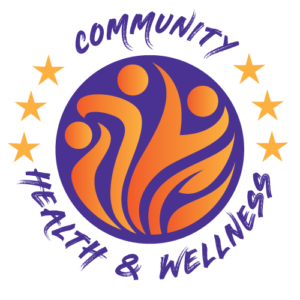
Understanding Cerebral Palsy
I never knew I wanted to work with individuals with intellectual and developmental disabilities until I started working at Community Health and Wellness. As a Regional Care Coordinator, one of my job duties is reading the client summary notes from their therapy sessions, and it is amazing being able to read the progress that recreational therapy does for individuals with a diagnosis like Cerebral Palsy. The simplest thing like a client being able to count their own money or order their own food is so humbling and rewarding to read. In my personal life, I know a very intelligent little girl who also has CP and is blind. With therapeutic intervention though she has been able to accomplish big little goals and let me tell you, it is incredible to see how far she has come.
The science of Cerebral Palsy
“neurological disorder caused by a non-progressive brain injury or malformation that occurs while the child’s brain is under development”
Cerebral Palsy is a “neurological disorder caused by a non-progressive brain injury or malformation that occurs while the child’s brain is under development” (n.d.) and “primarily affects body movement and muscle coordination” (n.d.). There are four main forms of Cerebral Palsy; Spastic, Dyskinetic, Ataxic, and Mixed. Spastic is the most common type of the disorder and has three sub-diagnoses. Dyskinetic is characterized by the slow and uncontrollable movements of the hands, feet, arms, or legs (2019). Ataxic affects the balance and depth perception and can also affect the coordination and gait of a individual (2019). Lastly, Mixed refers to symptoms that do not represent just one type of Cerebral Palsy but a combination of many (2019). Commonly known as CP, individuals who have the diagnosis will most likely show signs of physical impairment that can affect their balance, posture, coordination, and common tasks like tying shoes, walking, sitting, and grasping objects (n.d.). Therapeutic intervention can help individuals with CP overcome these challenges.
Therapeutic Intervention
“treatment service designed to restore, remediate and rehabilitate a person’s level of functioning and independence in life activities, to promote health and wellness as well as reduce or eliminate the activity limitations and restrictions to participation in life situations caused by an illness or disabling condition.” (n.d.)
Recreation Therapy
Recreational therapy is just one of the many therapies that can help benefit someone with CP. Recreational therapy is meant as a “treatment service designed to restore, remediate and rehabilitate a person’s level of functioning and independence in life activities, to promote health and wellness as well as reduce or eliminate the activity limitations and restrictions to participation in life situations caused by an illness or disabling condition.” (n.d.). Recreational therapy is meant to improve the quality of life and productivity for someone who might have a diagnosis like CP. Examples of Recreational therapy helping individuals with CP can be seen as hand over hand assistance to help with fine motor skills, stretching, and/or physical activities that help with muscle stiffness from sitting for long hours in a wheelchair or stroller (Ashmun, 2013). Recreational therapy is meant to help individuals with CP enhance their physical, cognitive, emotional, social and leisure development, so that they may participate fully and independently in chosen life pursuits. (n.d.).
References
About Recreational Therapy. (n.d.). Retrieved from https://www.atra-online.com/page/AboutRecTherapy
Ashmun, R. S. (2013). Therapeutic Guide to Intellectual Disability and Special Populations.
Cerebral Palsy: Hope Through Research. (2019, June 3). Retrieved from https://www.ninds.nih.gov/Disorders/Patient-Caregiver-Education/Hope-Through-Research/Cerebral-Palsy-Hope-Through-Research#3104_21
Definition of Cerebral Palsy. (n.d.). Retrieved from https://www.cerebralpalsy.org/about-cerebral-palsy/definition
Contact Information
Community Health and Wellness, LLC
Phone: 512-961-5316
Email: info@chawtx.com
Office Hours:
Mon-Fri, 8:00am - 5:00 pm CT


